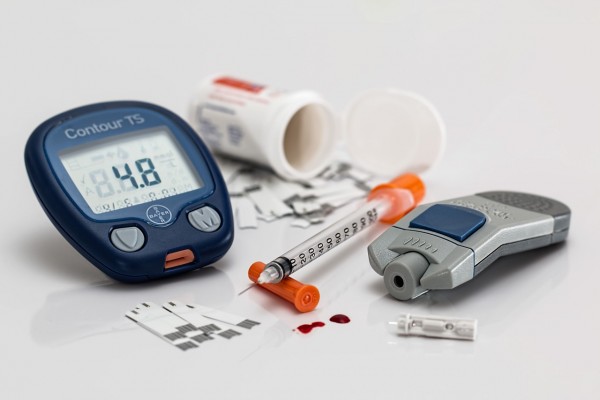Researchers Develop Painless Paper-patch Glucose Test to Monitor Prediabetes
A team of researchers led by Beomjoon Kim at the Institute of Industrial Science, The University of Tokyo, have developed a way to use microneedles for diagnosing medical conditions such as prediabetes.
Microneedles are less than 1 mm in length, which means they are short enough that they stay within the skin and does not reach any neurons, making them painless.
This patch of microneedles are connected to a paper sensor and instead of extracting blood, they draw up fluid in the skin which contains most of the important biomarkers that blood tests look for.
MORE INFO: Eating Nuts Twice a Week Helps Lower Death Risk From Heart Disease
Because biomarker levels of the interstitial fluid corresponds to those in the bloodstream, microneedle patches can be an alternative to the more painful hypodermic needles that draw actual blood samples.
Although several types of microneedles exist in the market now, making a low-cost device for rapid fluid analysis has been elusive for a long time. According to Kim, his team of researchers have found a solution through the development of porous microneedles combined with paper-based sensors. The whole process was low-cost, the patch was disposable, and no further instruments were needed.
How was it made?
By pouring a melted mixture of a biodegradable polymer and salt into the cone-shaped cavities of a micro-mold, all the time while applying heat, the researchers were able to make these microneedles. The mold and needles are turned upside down and placed on top of a paper, while applying high pressure from above.
The presence of this high pressure pushes the mixture into the paper's pores thereby securing the attachment and allowing the fluid drawn from the needles to pass into the paper.
Once removed from the mold, the needles were made to cool in a solution so that all the salt can be sucked out and leaving behind thousands of pores where the fluid flows through on its way to the paper.
The researchers had to test several concentrations of salt to determine how porous the microneedles should be.
The finishing touches to the patch were using double-sided tape to attach a paper glucose sensor onto the paper base of the needle array.
The patch was put into test on an agarose gel where glucose had been dissolved. The fluid from the gel flows into the pores of the microneedles, and from there into the paper and the last, the sensor layer. The glucose concentration was recorded based on the color changes detected on the paper.
What is Prediabetes?
Prediabetes means your blood sugar is higher than normal levels, but not enough to be diagnosed as type 2 diabetes. This usually does not show any signs and symptoms. However, without proper management, those with prediabetes are more likely to develop type 2 diabetes.
The American Diabetes Association (ADA) advises people to have a diabetes screening before the age of 45 if you are overweight or have additional risk factors. But for those with no other risks, the age of 45 is when you should start to screen for diabetes.
FURTHER READING: Visuospatial Exercises Can Train the Brain To Reduce Motion Sickness
Check out more news and information on Diabetes on MD News Daily.
Sep 15, 2020 09:52 PM EDT






